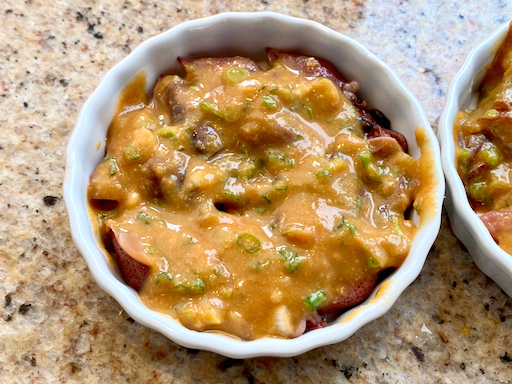One of the delicacies of Spring in Japan is firefly squid or “hotaru-ika” ホタルイカ. Like last year, we got boiled firefly squid from Regalis Food. Since I started seeing “Hotaru-ika” in the Japanese food blogs I follow, I checked the Regalis site but they were not available yet so I asked to be notified when they came in. A few days later, I got an email saying firefly squid was available. I looked for something else to purchase from their site but nothing drew my attention so I decided to fill out the order with two packages of the squid. A major part of the preparation of this squid is removing the stone hard eyes and beak before serving/cooking. (It is more difficult to remove the beak than the eyes. Unfortunately I was not completely successful in beak-removal on some of the squid as my wife so kindly pointed out to me after crunching down on several of the ones I accidentally left behind). I served the firefly squid with “sumiso” 酢味噌 with “wakame” 若芽 seaweed twice which is the most common and basic way to enjoy this. For some reason, this year’s firefly squid tasted better than the ones we got last year. Since this is such a simple way of serving the squid the quality really makes a difference. I then proceeded with other preparations to serve.
One of those new preparations is shown below; “firefly squid grilled in miso scallion sauce”. This is a perfect drinking snack and went so well with the cold sake we were having.The recipe came from e-recipe (in Japanese).
Ingredient: (for two small servings)
Firefly squid, about 20, both eyes and beak removed.
For sauce:
Scallion, finely chopped, about 2 tbs
Miso 1tbs
Japanese “dashi” broth 1tbs
Sugar 1-2 tsp
Soy sauce and white sesame (small amount, optional)
Directions:
Mix the all ingredients for the sauce (taste and adjust the amount of sugar and broth).
Place the firefly squid in a single layer in a oven-proof ramekin (picture below).





.jpeg)


















